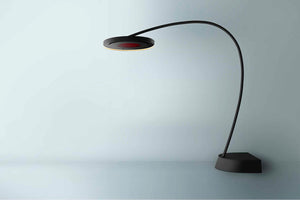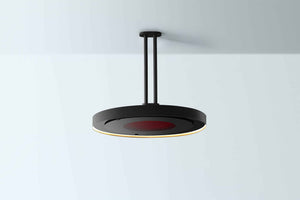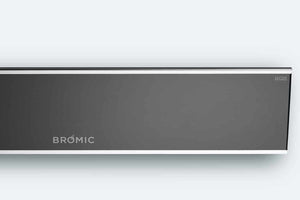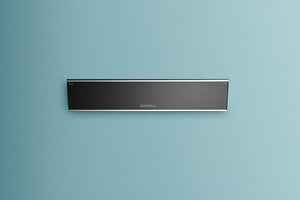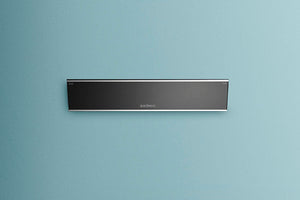Aquafire® Preventative Maintenance Guidelines
Steps for cleaning only the mist makers
- Turn your fireplace off then unplug the mist maker wire from the power outlet located at each of the large round mist tube housings
- Remove mist maker racks from the mist tubes. Depending on the amount of scale present, you can simply put a few drops of white vinegar directly on the white center of the mist maker and let it set for a few minutes before rinsing it off and returning the rack to the mist tube.
- For assemblies that have signs of algae build up or visible hard water residue, remove the 4 screws that attach the mist maker to the rack so you can soak the mist maker submerged in white vinegar for 10-20 minutes and clean the bottom of it as well; remember to keep the power cords attached to the mist makers out of the vinegar solution
- When the soaking period is complete, rinse thoroughly with water. You can use a soft tooth brush to gently brush the white surface of the mist maker as well as metal casing and the bottom to remove any visible stains. Do not use a stiff bristle brush or a Scotch-brite pad on the mist makers as this can cause permanent damage to them
- Re-attach the mist maker to the rack and then place the mist maker rack back into the mist tube
- Reconnect the mist maker power feed to the power outlet being sure to push the wire all the way down the slot in the side of the mist tube before putting the cap back on
Steps for cleaning the entire system
- Turn off the water feed if your unit is direct plumbed
- Use the flexible hose that came with your fireplace and connect it to the drain port on the front of the unit (AWO/ AWP models) or on the top if you have the AWPR series
- Put the other end of the hose in a 3-5 gal. bucket and push and hold the left button (B2) which starts the draining process. When the drain cycle stops, there will still be some water in the lower tank reservoirs. This is normal and if possible, remove the remaining few cups of water from the each of the mist tubes by using a smaller 1/4" siphon hose, a large “turkey baster”, or a small sponge. Avoid using any material that could flake off or leave debris in the lower tank
- Once the water is out, add approximately 1/2 gallon of vinegar by using your fill/drain hose and pressing the B1 button to run the manual fill cycle or simply pour equal amounts of vinegar directly into the mist tubes being careful not to overfill. The system will have enough in it when the vinegar level in the mist tube is just above the top of the mist maker itself (approx. 2”). Overfilling may result in excess vinegar leaking out of the front fans.
- Like the mist maker soak above, let the vinegar sit in the tanks for approx. 10-20 minutes to loosen hard water scaling that may have collected on the float sensors
- Do Not operate the fireplace during this vinegar cleaning process
- After the soak period is complete (and before you drain it), agitate the vinegar in each of the lower tanks to help break up any remaining residue on the float sensors. Do this by raising and lowering the mist maker rack vigorously so you can hear it splashing in the lower tank. Do this 10-15 times in each of the mist tubes in your unit
- Drain the vinegar just as you did the water using the drain hose, hose bib, and B2 button
- Once the vinegar is out, fill the unit with fresh water either by turning the water back on (if permanently plumbed), or by using the hose and fill cycle (B1) button
- You’ll want to fill and drain the entire system twice to ensure that you’ve removed all the vinegar and contaminates that are suspended in the water. After you’ve filled the system back up for the 3 rd time, go ahead and run the unit as you would normally
**IMPORTANT NOTE: 2-3 days after a cleaning you may still experience mist issues. This is most likely caused by leftover debris from your initial cleaning. Debris can continue to slough off days after a deep vinegar clean. This is completely normal! If you continue to experience mist issues, please open the mist tubes, check for debris and reagitate the mist rack and float sensor. At this point, you may need to flush out the water to rid the tank of debris or complete another full clean.
The more frequently you clean the insert, the less likely you are to experience delayed debris after a cleaning. Once you get into a cleaning schedule, the mist and float sensor issues should dissipate.
Cleaning the mist makers 2-3 times a year helps to extend their life. Cleaning the entire system 1-2 times a year helps to maintain the float sensors. Systems that are not run regularly or are subjected to hard water have a tendency to require cleaning more often. As always, if you have any questions please reach out for assistance. Once you’ve done it, you’ll see it’s easy and takes little effort to maintain your system.







